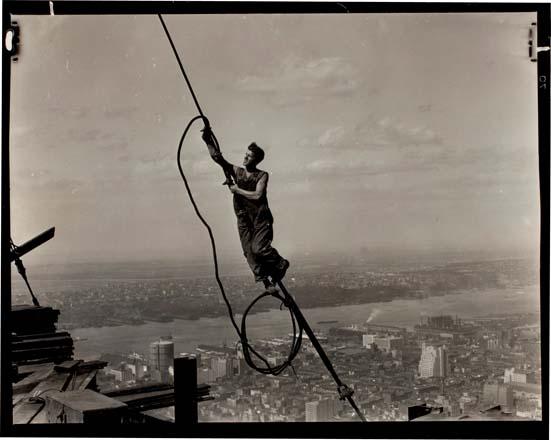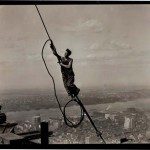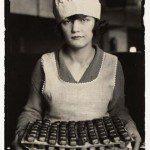MoMA has Magritte. The Jewish Museum, Chagall. Kandinsky is at the Neue Galerie and Gaultier is in Brooklyn. Christopher Wool is getting raves at the Guggenheim.
But this brief double-review talks about a small show at a large museum and a large show at a small museum, each worth a special trip.
Few Americans—other than Korean-Americans—have more than a cursory knowledge of Korean culture. When we think of Korean art, we tend to picture gray-green celadon pottery. “Silla: Korea’s Golden Kingdom,” at the Metropolitan Museum of Art through Feb. 23, opens a new and fascinating window.
And it’s a picture window. At the entrance to the exhibition, projected onto a wide curved screen, are alternating video views of Hwangnam Daechong, the grass-covered Great Tomb of Hwangnam in Gyeongju, a city in southeast Korea. Conjoined burial mounds (His and Hers), the Great Tomb is the largest in the kingdom’s former capital.
Silla endured for nearly a millennium, until A.D. 935, when it gave way to the Goryeo dynasty, for which the country is named.
Most of the objects on display were excavated from tombs and date from the fifth to the eighth century (Buddhism became the official religion in 527.). Made of stoneware, jade, gilt bronze, and gold, they have been restored as nearly as possible to their original brilliance.
The label text for “National Treasure 83,” a gilt bronze statue of a bodhisattva, probably Maitreya (Mireuk in Korean), notes the “extraordinary balance between his contemplative aura and the sense of energy captured by the drumming fingers of his left hand and the upturned toes of his right foot.” The smooth musculature of the figure’s bare upper body reminds one of the influence of Asian sculpture on Art Deco sculptors, such as Paul Manship.
There are several other national treasures in the exhibition, curated by the Met’s Soyoung Lee and Denise Leidy, including a crown with stylized, antler-like projections—and pieces of jade shaped like hooks or tiger’s teeth—and a belt with pendant ornaments. Stunning examples of craftsmanship in gold, they came from the north portion of the Great Tomb, in which the queen was interred.
Another section focuses on objects that reached Silla through trade, diplomacy, or war. An elaborate gold dagger and sheath, inlaid with garnet and glass using the technique known as cloisonné, originated in the Black Sea region or Central Asia.
After watching a four-minute animation about the construction of the Seokguram Grotto, a World Heritage Site, visitors proceed to a final, shadowy gallery in which sits a monumental cast-iron Buddha from the late eighth or early ninth century, similar to the one at the center of the Grotto.
Also currently at the Met: “Interwoven Globe: The Worldwide Textile Trade 1500-1800,” “Julia Margaret Cameron” and “Balthus: Cats and Girls.”
Though Jan. 19, the International Center of Photography is showing “Lewis Hine,” a major retrospective of the pioneering American photojournalist, who died at age 66 in 1940.
Exhibition curator Alison Nordstrom has filled most of ICP’s lower level with Hine’s pictures, on loan from Rochester’s George Eastman House (the collection was initially offered to MoMA, which turned it down). Many are classics:
• A young blond girl in filthy clothing in a North Carolina cotton mill, the rows of white bobbins and the floorboards themselves seeming to converge on her (1908);
• An Italian immigrant in full blouse and long skirt, like the drapery on a statue, carrying a bundle of garments on her head in New York’s tenement district (1910);
• A newspaper boy in D.C. (Danny Mercurio, 150 Scholes Alley), wearing a hat like a helmet and looking as if he’s about to spit tobacco at the photographer (1912);
• A bare-armed, coveralls-wearing construction worker in mid-air, his legs wrapped around a steel cable, high above Manhattan, the Hudson River, New Jersey, America (1931).
Raised in Wisconsin, Hine began to photograph while teaching at New York’s Ethical Culture School. Another Midwesterner, Paul Kellogg, hired him to take photographs for a comprehensive sociological study of Pittsburgh, published between 1908 and 1914. Editor of the progressive magazine, Charities and the Commons, later renamed The Survey (which launched a supplement called The Survey Graphic in 1921), Kellogg regularly commissioned Hine to illustrate social welfare stories, copies of which are on display.
Passing through the different sections of the exhibition—Ellis Island, child labor, the Pittsburgh Survey, worker portraits, photographs of African Americans, the American Red Cross Survey, the Empire State Building—one sees how Hine’s images inspired photographers now recognized as important artists: Walker Evans, Robert Frank, Diane Arbus and Richard Avedon, to name a few.
A single-gallery companion show, “The Future of America: Lewis Hine’s New Deal Photographs,” curated by Judith Gutman from ICP’s holdings, covers Hine’s last years.
Also currently at ICP: “Zoe Strauss: 10 Years” and “JFK November 22, 1963: A Bystander’s View of History.”




